
doi.org/10.15198/seeci.2019.50.1-26
RESEARCH
ANALYSIS ON THE USE OF THE SOCIAL NETWORK FACEBOOK IN THE TEACHING-LEARNING PROCESS THROUGH DATA SCIENCE
ANÁLISIS SOBRE EL USO DE LA RED SOCIAL FACEBOOK EN EL PROCESO DE ENSEÑANZA-APRENDIZAJE POR MEDIO DE LA CIENCIA DE DATOS
ANALISES SOBRE O USO DA REDE SOCIAL FACEBOOK NO PROCESSO DE ENSINO-APRENDIZAGEM ATRAVÉS DA CIÊNCIA DE DADOS
Ricardo-Adán Salas-Rueda1
Rodrigo-David Salas-Rueda2
1Institute of Applied Sciences and Technology, National Autonomous University of Mexico. Mexico.
ricardo.salas@icat.unam.mx
1Doctor en Diseño de Nuevas Tecnologías. Investigador de tiempo completo en el Instituto de Ciencias Aplicadas y Tecnología, Universidad Nacional Autónoma de México. Maestro en Administración e Ingeniero en Sistemas Electrónicos. Investigador nacional SNI nivel 1 (Conacyt) durante el periodo 2019-2021 y Candidato SNI durante el periodo 2016-2018.
2Autonomous Metropolitan University. Mexico.
rodrigodavidsalas@hotmail.com
ABSTRACT
Nowadays, technological advances are causing the development of new teaching-learning strategies. In fact, social networks are becoming very important during the planning of school activities. In particular, this mixed research analyzes the use of Facebook as a means of dissemination, communication, learning, interaction and collaboration during the realization of laboratory practices in the subject “Development of applications for business”. Data mining allows predictive models to be established about the impact of Facebook during the design of the web interface considering the Bayesian and Decision tree techniques (data science). The sample consists of 69 students of the Bachelor in Business Management and Information Technology. Through the quantitative and qualitative approach, this study analyzes the use of this social network in the teaching-learning process related to the design of the web interface, HTML instructions, PHP programming language, WampServer application and MYSQL database. Likewise, the ANOVA method evaluates the academic performance of the experimental and control groups by means of the grade in the practical project. The results obtained allow us to affirm that Facebook represents a technological alternative to improve the organization and implementation of educational experiences in the 21st century.
KEY WORDS: Facebook, social network, educational technology, data science, data mining, ICT, technology
RESUMEN
Hoy en día, los avances tecnológicos están provocando el desarrollo de nuevas estrategias de enseñanza-aprendizaje. De hecho, las redes sociales están adquiriendo gran relevancia durante la planeación de las actividades escolares. En particular, esta investigación mixta analiza el uso de Facebook como medio de difusión, comunicación, aprendizaje, interacción y colaboración durante la realización de las prácticas de laboratorio en la asignatura “Desarrollo de aplicaciones para los negocios”. La minería de datos permite establecer los modelos predictivos sobre el impacto de Facebook durante el diseño de la interfaz web considerando las técnicas bayesiana y árbol de decisión (ciencia de datos). La muestra está compuesta por 69 estudiantes de la Licenciatura en Gestión de Negocios y Tecnologías de Información. Por medio del enfoque cuantitativo y cualitativo, este estudio analiza el empleo de esta red social en el proceso de enseñanza-aprendizaje relacionado con el diseño de la interfaz web, las instrucciones HTML, el lenguaje de programación PHP, la aplicación WampServer y la base de datos MYSQL. Asimismo, el método ANOVA evalúa el rendimiento académico de los grupos experimental y control por medio de la calificación en el proyecto práctico. Los resultados obtenidos permiten afirmar que Facebook representa una alternativa tecnológica para mejorar la organización e implementación de las experiencias educativas en el siglo XXI.
PALABRAS CLAVE: Facebook, red social, tecnología educativa, ciencia de datos, minería de datos, TIC, tecnología
RESUME
Hoje em dia, os avances tecnológicos estão provocando um desenvolvimento de novas estratégias de ensino-aprendizagem. De fato, as redes sociais estão adquirindo grande relevância durante o planejamento das atividades escolares. Em particular, esta investigação mista analisa o uso do Facebook como meio de difusão, comunicação, aprendizagem, interação e colaboração durante a realização das práticas de laboratório na matéria “Desenvolvimento de aplicações para os negocios”. A recopilação de dados permite estabelecer os modelos preditivos sobre o impacto do Facebook durante o desenho da interface web considerando as técnicas bayesiana e arvore de decisão (ciência de dados). A amostra esta composta por 69 estudantes da Licenciatura em Gestão de Negócios e Tecnologia de Informação. Através do enfoque quantitativo e qualitativo, este estudo analisa o emprego desta rede social no processo do ensino-aprendizagem relacionado com o desenho da interface web, as instruções HTML, a linguagem de programação PHP, a aplicação WampServer e a base de dados MYSQL. Assim mesmo, o método ANOVA valora o rendimento acadêmico dos grupos experimental e controle por meio da qualificação no projeto prático. Os resultados obtidos permitem afirmar que Facebook representa uma alternativa tecnológica para melhorar a organização e implementação das experiências educativas no século XXI.
PALAVRAS CHAVE: Facebook, rede social, tecnologia educativa, ciência de dados , TIC , tecnologia
How to cite the article:
Salas-Rueda, R. A. & Salas-Rueda, R. D. (2019). Analysis on the use of the social network Facebook in the teaching-learning process through data science. [Análisis sobre el uso de la red social Facebook en el proceso de enseñanza-aprendizaje por medio de la ciencia de datos]. Revista de Comunicación de la SEECI, (50), 1-26. doi: http://doi.org/10.15198/seeci.2019.50.1-26
Recovered from http://www.seeci.net/revista/index.php/seeci/article/view/554
Received: 27/08/2018
Accepted: 21/02/2019
Published: 15/11/2019
1. INTRODUCTION
Nowadays, educational institutions are building new scenarios for teaching and learning through the incorporation, acceptance and appropriation of Information and Communication Technologies (ICTs) in the classroom (Henderson, Finger and Selwyn, 2016; Janssen and Lazonder, 2015; Mendizábal, 2017; Rehmat and Bailey, 2014; Rosaline and Wesley, 2017; Salas, 2016; Tomei, 2013).
The educational challenges include the creation of courses on the use of digital tools in the classroom (Mendizábal, 2017; Salas y Salas, 2018). In fact, 21st Century professors use new media and communication channels for the development of school activities (Campbell, Longhurst, Wang, Hsu and Coster, 2015; Mendizábal, 2017; Rabah, 2015; Salas, 2018).
Technological advances in the field of telecommunications are causing an increase in the use of social networks by young people (Demirbilek, 2015; Domínguez, 2017). In particular, Facebook is the most used social network in the world (Arteaga, Cortijob and Javedc, 2014; Rap and Blonder, 2017; Stirling, 2016).
In fact, the teaching-learning activities in the classroom are being modified due to the use of social networks as a tool for interaction and communication between students and professors (Domínguez, 2017; Greenhow and Lewin, 2016; Kitchakarn, 2016; Kyei, Iyer and Subramanian, 2016; Lee and Lee, 2016; Salas, Lugo and Ruiz, 2017).
This piece of mixed research analyzes the use of the social network Facebook as a means of dissemination, communication, learning, interaction and collaboration during the realization of laboratory practices in the subject Development of Applications for Business during the 2017 school year, considering data science.
1.1 Social networks
Nowadays, university students frequently use different digital technologies, especially social networks, to communicate, interact and organize their school activities (Domínguez, 2017; Moghavvemi and Salarzadeh, 2017; Pimmer, Chipps, Brysiewicz, Walters and Linxen, 2016).
It is worth mentioning that access to social networks such as Facebook, Twitter and Google Plus is increasingly simple and daily among young people (Domínguez, 2017). Therefore, professors are beginning to use these web 2.0 tools to request the sending and publication of teaching-learning activities (Domínguez, 2017; Lee, Lee and Kim, 2015; Salas y Salas, 2019).
Some of the benefits of social networks in the educational field are collaboration for the creation of documents, dissemination of information on the network, construction of relationships among peers and sending of digital resources (Alarabiat and Al, 2015; Smith, 2017).
In addition, these digital tools facilitate communication among the actors of the teaching-learning process and the construction of knowledge (Chen, 2015; Kent, 2016; Tuzel and Hobbs, 2017). In particular, Facebook allows communication between students and professors through text, images, links on the web and videos (Moore, Radosta, Martin and Hamilton, 2017; Nkhoma, Cong, Lam and Richardson, 2015).
It is worth mentioning that Facebook is a fundamental tool for carrying out school tasks and activities (Aaen and Dalsgaard, 2016; Magogwe, Ntereke and Phetlhe, 2015). In fact, this social network improves the academic performance of students (Celik, Yurt and Sahin, 2015).
This quantitative and qualitative study analyzes the use of the social network Facebook in the subject Development of Applications for Business with the purpose of answering the following research questions:
2. OBJECTIVES
This piece of research uses the quantitative and qualitative approach to analyze and evaluate the use of the social network Facebook in the teaching-learning process on the design and implementation of websites, considering the Bayesian and decision tree (data mining) techniques.
3. METHODOLOGY
The participants in this mixed study are 69 students of the Degree in Business Management and Information Technology who studied the subject Development of Applications for Business during the 2017, 2016 and 2014 school cycles (see Table 1).
Table 1. Research sample.

Source: Own elaboration.
Measurement Instrument nº 1 (questionnaire) is composed of 25 closed questions about the use of Facebook as a means of dissemination (5 questions), communication (5 questions), learning (5 questions), interaction (5 questions) and collaboration (5 questions), 3 closed questions on the profile of the student (gender, age, qualification of the practical project) and 5 open questions about the impact of this social network in the teaching-learning process.
The procedure of this piece of research began with the planning and organization of laboratory practices in the 2017 school year, considering the use of the social network Facebook (see table 2).
Table 2. Laboratory practices.
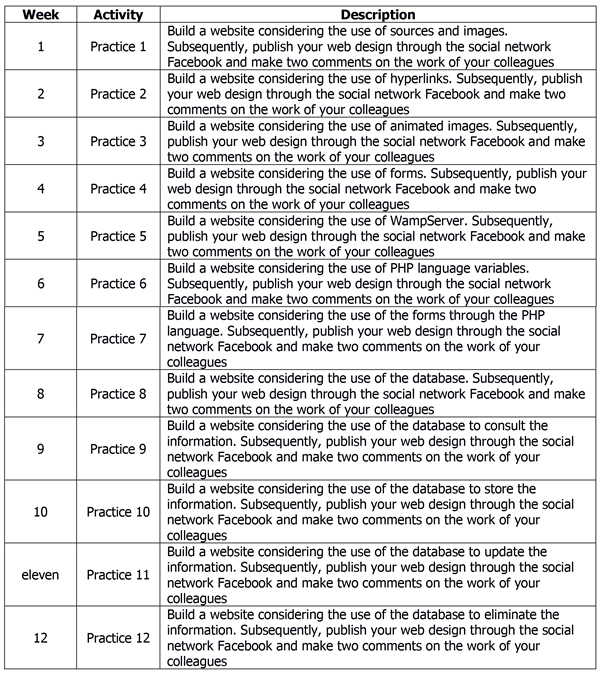
Source: Own elaboration.
It is worth mentioning that these laboratory practices are carried out for 12 weeks in the 2017 school year. In the laboratory classes, students use the social network Facebook to share, discuss and reflect on the construction of websites. Subsequently, these students developed the practical project of partial 3 on the implementation of a website, considering the use of the database (see Table 3).
Table 3. Practical project of the third partial.

Source: Own elaboration.
The hypotheses used in this piece of research on the incorporation of technology in the classroom are:
This study analyzed the academic performance of the experimental and control groups during the elaboration of the practical project by means of the ANOVA method with the levels of significance 0.05, 0.03 and 0.01.
Through the RapidMiner tool, this piece of research obtains the following predictive models by means of Bayesian and decision tree (data science) techniques:
Image 1 shows the elements of the RapidMiner tool used to perform the analysis on the impact of the social network Facebook in the teaching-learning process by means of the decision tree (data science) technique.
Source: Self-made with RapidMiner tool.

Image 1. Use of the RapidMiner tool for the decision tree technique.
Image 2 shows the information used to develop the predictive model on the use of Facebook as a means of dissemination during the design of the web interface by means of the decision tree technique: Gender, Age, Qualification, WampServer Application, MYSQL Database, PHP programming language and HTML instructions.
Source: Prepared by the author with the RapidMiner tool.

Image 2. Information used during the decision tree technique.
Image 3 shows the elements of the RapidMiner tool used to analyze the impact of the social network Facebook on the teaching-learning process through the Bayesian technique.
Source: Prepared by the author with the RapidMiner tool.
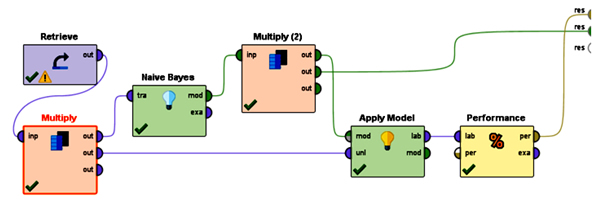
Image 3. Use of the RapidMiner tool for the Bayesian technique.
Image 4 shows the information used to calculate the predictive model on the use of Facebook as a means of dissemination during the design of the web interface by means of the Bayesian technique: WampServer application, MYSQL database, PHP programming language and HTML instructions.
Source: Prepared by the author with the RapidMiner tool.

Image 4. Information used during the Bayesian technique.
At the end of the elaboration of the laboratory practices (14 weeks), the experimental group answered Measurement Instrument nº 1 on the incorporation of Facebook in the teaching-learning process. Finally, this piece of research compiles the information about this social network and the qualification of the practical project to perform data analysis through the spreadsheet.
4. DISCUSSION
The results obtained from the RapidMiner tool on the use of the social network Facebook in the teaching-learning process are shown below.
4.1. Facebook as a means of dissemination
Image 5 shows the predictive model on the use of Facebook as a means of dissemination in the teaching-learning process. If the student considers that Facebook “Quite” facilitates the diffusion of the PHP Language, then this social network “Quite” facilitates the design of the web interface.
Source: Prepared by the author with the RapidMiner tool.
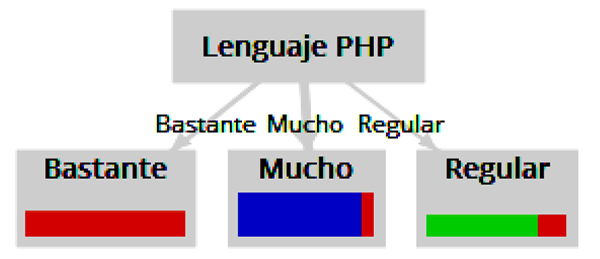
Image 5. Predictive model on the use of Facebook as a means of dissemination.
The accuracy of the Predictive Model on the use of Facebook as a means of diffusion is 90.91% (see Image 6).
Source: Self-made with the RapidMiner tool.

Image 6. Accuracy in the predictive model on Facebook as diffusion means.
The probabilities of the Bayesian technique indicate that the use of the social network Facebook as a means of dissemination will facilitate “Much” (0.455), “Moderately” (0.182) and “Quite” (0.364) the teaching-learning process. The accuracy of this predictive model is 100% (see Image 7).
Source: Self-made with the RapidMiner tool.
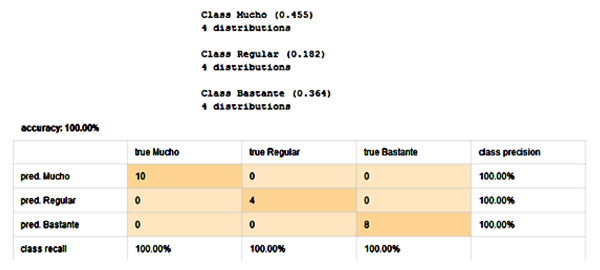
Image 7. Bayesian technique on Facebook as a means of diffusion.
Table 4 presents the results obtained on the use of the social network Facebook for the dissemination of laboratory practices in the subject Development of Applications for Business.
Table 4. Use of Facebook for dissemination.

Source: Own elaboration.
45.455% of students consider that the incorporation of Facebook “Much” facilitates the dissemination of the laboratory practices on the design of the interface. Even 36.364% is located in the “Quite” category. With regard to the dissemination of laboratory activities on the WampServer application, 81.818% of participants are distributed in the “Much” (45.455%) and “Quite” (36.364%) categories.
It is important to mention that 50.000% of respondents think that the use of this social network “Much” facilitates the dissemination of laboratory practices on the MYSQL Database. Similarly, 50.000% of university students are located in the “Much” category for the dissemination of PHP language practices through this social network.
The use of Facebook for the dissemination of practices on HTML instructions indicates that 40.909% of students are located in the “Much” category. It is worth mentioning that all the aspects of Facebook as a means of diffusion have a percentage higher than 40,000% in the “Much” category. Even, no student is in the “Little bit” and “Nothing” categories.
4.2. Facebook as a means of communication
Figure 8 shows the predictive model about the use of Facebook as a means of communication in the teaching-learning process.
Source: Prepared by the author with the RapidMiner tool.
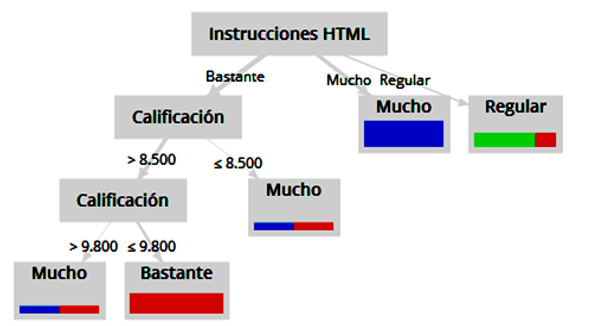
Image 8. Predictive model on Facebook as a means of communication.
If the student considers that Facebook “Quite” facilitates communication in the teaching-learning process on the HTML Instructions and receives a grade in the practical project from 8.5 to 9.8, then this social network “Quite” facilitates the design of the web interface (see Figure 8).
The accuracy of the predictive model on the use of the social network Facebook as a means of communication in the teaching- learning process is 86.36% (see Figure 9).
Source: Prepared by the author with the RapidMiner tool.

Image 9. Accuracy in the predictive model on Facebook as a means of communication.
The results obtained from the Bayesian technique indicate that the greatest probability of the impact of Facebook as a means of communication during the design of the interface is in the “Much” category (0.455). Image 10 shows that the accuracy of this predictive model is 86.36%.
Source: Prepared by the author with the RapidMiner tool.
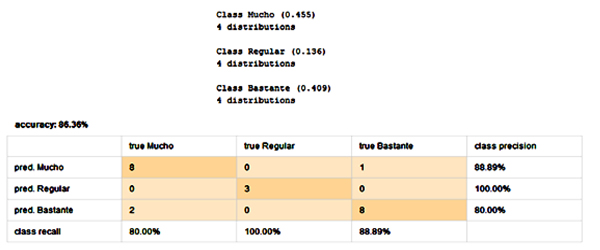
Image 10. Bayesian technique on Facebook as a means of communication.
Table 5 shows the results related to the use of the social network Facebook to facilitate the communication of the laboratory practices in the subject “Development of Applications for Business”.
Table 5. Use of Facebook for communication.

Source: Own elaboration.
According to 45.455% of the experimental group, the incorporation of the social network Facebook “Much” facilitates communication during the realization of the practices on the Design of the web interface. Even, 40.909% of respondents are located in the “Quite” category.
The communication variable for laboratory practices on the WampServer application indicates that 90.909% of students are distributed in the “Much” (45.455%) and “Quite” (45.455%) categories. Likewise, 45.455% of students consider that the employment of Facebook “Quite” facilitates communication during the activities of the laboratory on the MYSQL Database. Even, the “Much” category has 40.909%.
Another of the fundamental topics in the subject “Development of Applications for Business” is the PHP language. The greatest preference over this aspect is found in the “Much” (40.909%) and “Quite” (40.909%) categories. According to 45.455% of participants think that the use of this social network “Quite” facilitates the communication process during the practices on the HTML Instructions. It should be mentioned that all aspects of the social network Facebook as a means of communication show that no student is in the “Little bit” and “Nothing” categories.
4.3. Facebook as a learning means
Image 11 shows the predictive model on the use of Facebook as a learning means during the design of the interface.
Source: Prepared by the author with the RapidMiner tool.
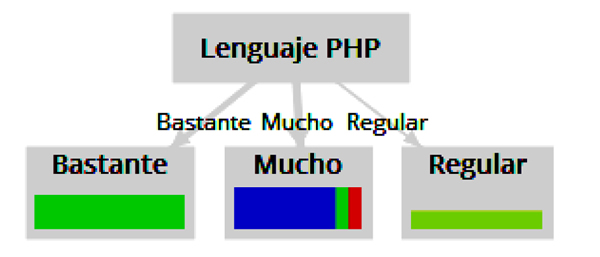
Image 11. Predictive model on Facebook as a learning means.
If the student considers that the use of Facebook “Quite” facilitates the learning of the PHP Language, then this social network “Quite” facilitates the design of the interface (see Image 11). The accuracy of this predictive model related to the decision tree technique is 90.91% (see Image 12).
Source: Prepared by the author with the Rapidminer tool.

Image 12. Accuracy in the predictive model on Facebook as a learning means.
The Bayesian technique indicates that the probabilities of using Facebook as a learning means are “Much” (0.364), “Quite” (0.409), “Regular” (0.182) and “Little bit” (0.045). The accuracy of this model is 95.45% (see Image 13).
Source: Prepared by the author with the RapidMiner tool.
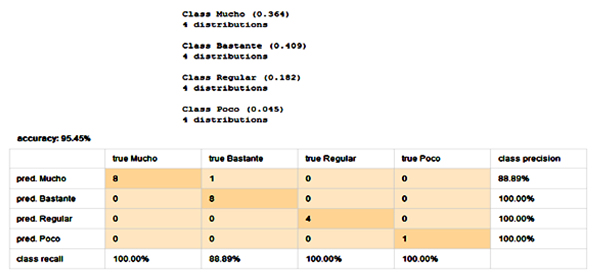
Image 13. Bayesian technique on Face book as a learning means.
The educational process in the subject “Development of Applications for Business” includes the contents about interface design, WampServer application, MYSQL database, PHP language and HTML instructions.
Table 6 shows the results on the variable Facebook as a means of learning during the performance of laboratory practices.
Table 6. Using Facebook for learning.

Source: Own elaboration.
The social network Facebook “Much” facilitates (36.364%) and “Quite” (40.909%) the learning process about the practices of the design of the interface. However, 18.182% of respondents are in the “Regular” category. On the other hand, this social network “Much” facilitates (45.455%) the learning of the practices on the WampServer application. Even, 36.364% of participants are in the “Quite” category.
The use of Facebook as a learning means about the MYSQL Database has the “Much” category with 50.000% of the students. In addition, the “Quite” category has 27.273% of respondents. It is worth mentioning that 81.818% of participants consider that Facebook “Much” facilitates (45.455%) and “Quite” (36.364%) the learning of the PHP Language during the realization of laboratory practices.
Similarly, 81.818% of university students are distributed in the “Much” (50,000%) and “Quite” (31.818%) categories on the use of this social network in the learning of HTML instructions. Finally, the use of Facebook as a learning means about the HTML Instructions and the MYSQL Database has 50,000% of students in the “Much” category.
4.4. Facebook as an interaction means
La Imagen 14 muestra el modelo predictivo sobre el uso de la red social Facebook como medio de interacción en el proceso de enseñanza-aprendizaje durante el diseño de la interfaz.
Fuente: Prepared by the author with the RapidMiner tool.
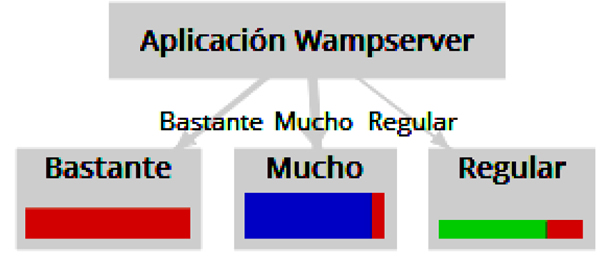
Image 14. Predictive model on Facebook as an interaction means.
If the student considers that the use of Facebook “Quite” facilitates the interaction in the educational process on the WampServer Application, then this social network “Quite” facilitates the design of the interface (see Image 14).
Image 15 shows that the accuracy of the predictive model on Facebook as an interaction means is 90.91%.
Source: Prepared by the author with the RapidMiner tool.

Image 15. Accuracy in the predictive model on Facebook as an interaction means.
The results obtained from the Bayesian technique indicate that the use of Facebook as an interaction means favors “Much” (0.455) and “Quite” (0.409) the teaching process (see Image 16). The accuracy of this predictive model is 90.91%.
Source: Prepared by the author with the RapidMiner tool.
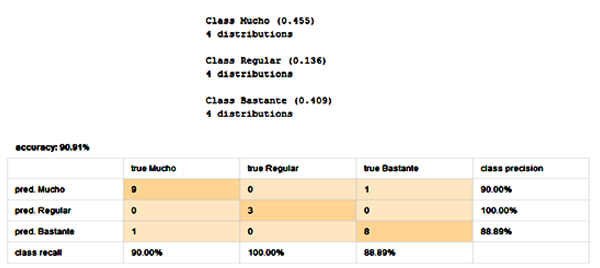
Image 16. Bayesian technique about Facebook as an interaction means.
Another aspect analyzed in this piece of research is the interaction among students during the realization of laboratory practices through the social network Facebook (see Table 7).
Table 7. Using Facebook for interaction.

Source: Own elaboration.
According to 45.455% of students, the employment of the social network Facebook “Much” facilitates interaction during the realization of the practices on the design of the web interface. In fact, the “Quite” category contains 40.909% of respondents. Likewise, 50.000% of the experimental group thinks that the incorporation of this social network “Much” facilitates interaction during the realization of the laboratory practices on the WampServer application.
On the other hand, the variable interaction on the MYSQL Database practices indicates that 81.818% of students are distributed in the “Much” (54.545%) and “Quite” (27.273%) categories. The interaction in the laboratory on the PHP language has favorable results because 90.909% of participants are in the “Much” (45.455%) and “Quite” (45.455%) categories.
It is worth mentioning that 59.091% of students affirm that the use of this social network “Much” facilitates interaction during the realization of the laboratory practices on the HTML instructions. It is worth mentioning that all the aspects about the use of Facebook as an interaction means in the laboratory has a value higher than 45,000% in the “Much” category.
4.5. Facebook as a means of collaboration
Image 17 shows the model about the use of the social network Facebook as a means of collaboration during the design of the interface.
Source: Prepared by the author with the RapidMiner tool.
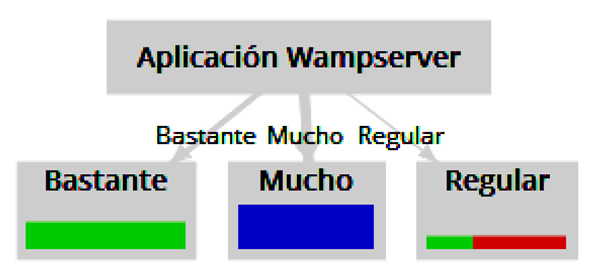
Image 17. Predictive model on Facebook as a means of collaboration.
If the student considers that the use of Facebook as a means of collaboration “Much” facilitates the educational process on the WampServer Application, then this social network makes the design of the interface “Much” easier (see Fgure 17).
Image 18 shows that the accuracy of the predictive model on Facebook as a means of collaboration is 95.45%.
Source: Prepared by the author with the RapidMiner tool.

Image 18. Accuracy in the predictive model on Facebook as a means of collaboration.
Image 19 shows that the highest probability obtained from the Bayesian technique is located in the “Much” category (0.545). Also, the accuracy of this predictive model is 100%.
Source: Prepared by the author with the RapidMiner tool.
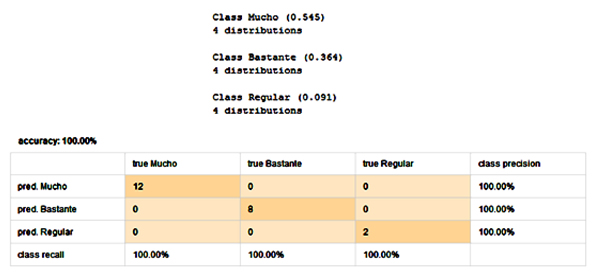
Image 19. Bayesian technique on Facebook as a means of collaboration.
Table 8 shows the results of the use of Facebook as a means of collaboration during the laboratory practices in the subject “Development of Applications for Business”.
Table 8. Using Facebook for collaboration.

Source: Own elaboration.
According to 54.545% of the experimental group, Facebook “Much” facilitates collaboration during the laboratory practices on the design of the web interface. Likewise, 36.364% of students are located in the “Quite” category. Similarly, 54.545% of respondents indicate that the incorporation of this social network “Much” facilitates collaboration during the practices on the WampServer application. Only 13.636% are in the “Regular” category.
It is worth mentioning that 59.091% of university students think that Facebook “Much” facilitates the collaboration of activities on the MYSQL database in the laboratory. Even, 90.909% of individuals are in the “Much” and “Quite” categories. The results of the practices on the PHP Language show that 90.909% of respondents are distributed in the “Much” (45.455%) and “Quite” (45.455%) categories.
59.091% of participants think that this social network “Much” facilitates collaboration during the activities of the laboratory on the HTML instructions. In fact, 31.818% are in the “Quite” category.
For the variable Facebook as a means of collaboration during laboratory practices, no student of the Degree in Business Management and Information Technologies is located in the “Little bit” and “Nothing” categories.
4.6. Academic performance in the practical project
Table 9 shows that the experimental group has a higher average in the practical project than the control group of the 2016 school.
Table 9. Groups of school cycles 2017 and 2016.

Source: Own elaboration.
Table 10 shows that the value of F (9.1186) is greater than the critical values ??with the levels of significance 0.05, 0.03 and 0.01. Therefore, the alternative hypothesis is accepted: The social network Facebook improves the academic performance of the students on the practical project.
Table 10. ANOVA method for the groups of the 2017 and 2016 periods.

Source: Own elaboration.
Likewise, the experimental group has a higher academic performance in the elaboration of the practical project in comparison with the control group of the 2014 school year (see Table 11).
Table 11. Groups of school cycles 2017 and 2014.

Source: Own elaboration.
Likewise, the ANOVA method is used to determine the impact of Facebook on the educational process in the 2017 and 2014 school cycles. Table 12 shows the F value (12.2330488) is greater than the critical values of F (4.0912, 5.0733 and 7.3327). Therefore, this social network improves the academic performance of students during the development of the practical project of the third assessment and the alternative hypothesis is accepted.
Table 12. ANOVA method for the groups of the periods 2017 and 2014.

Source: Own elaboration.
4.7. Perception by students
The participants of the Degree in Business Management and Information Technologies consider that the social network Facebook facilitates the dissemination of laboratory practices:
“Yes, because you share what you learn” (Student 1, Female, 21 years old).
“Yes, because it is an excellent means to communicate and share information with your colleagues” (Student 3, Male, 23 years old).
“Yes, because we see the practices of the classmates” (Student 12, Male, 21 years old).
Likewise, the students of the subject Development of Applications for Business mention that the social network Facebook improves communication among the students during the elaboration of the laboratory practices:
“Yes, because others see what you share and correct you” (Student 2, Female, 21 years old).
“Yes, because it is a different way of communicating” (Student 6, Female, 21 years old).
“Yes, since, as all students are together, it is easier to communicate with one another” (Student 7, Female, 20 years old).
According to university students, the social network Facebook facilitates the learning process related to the planning, organization and implementation of the websites:
“Yes, because it is a very used and easy platform for us” (Student 7, Female, 20 years old).
“Yes, understanding is easier” (Student 8, Male, 24 years old).
“Yes, it’s a new way that allows us to learn more easily” (Student 14, Male, 22 years old).
The interaction in the course Application Development improves the teaching-learning process through the incorporation of the social network Facebook:
“Yes, because we help each other through our comments and learn different points of view” (Student 7, Female, 20 years old).
“Yes, it is a very interactive experience” (Student 13, Male, 20 years old).
“Yes, to review and compare other points of view” (Student 17, Male, 23 years old).
Another benefit of the use of the social network Facebook is the collaboration of the participants during the teaching-learning process:
“Yes, since you can see different points of view” (Student 6, Female, 21 years old).
“Yes, because we can help each other if there is any doubt” (Student 8, Male, 24 years old).
“Yes, since we can get support from the others’ work” (Student 10, Male, 22 years old).
This piece of mixed research shares the ideas of various authors (Henderson, Finger and Selwyn, 2016, Rosaline and Wesley, 2017, Salas, 2016) on the importance of information and communication technologies to innovate the teaching-learning process.
This piece of quantitative and qualitative research analyzed the use of the social network Facebook in the teaching-learning process, considering data mining. In particular, the decision tree technique allows the following predictive models to be identified:
Likewise, the Bayesian technique allows us to identify the probability of the impact of the social network Facebook during the design of the web interface as a means of dissemination, communication, learning, interaction and collaboration.
Several authors (Domínguez, 2017, Moghavvemi and Salarzadeh, 2017) point out that social networks are an ideal means to achieve efficient communication and interaction among students during the teaching-learning process.
In fact, the students of the 2017 school year (experimental group) had a better academic performance during the elaboration of the practical project than the students of the 2014 and 2016 school cycles (control groups) due to the use of the social network Facebook.
Finally, professors must incorporate technological and communication tools such as social networks during the planning and organization of school activities with the aim of developing competencies in students (Salas, Salas, Salas y Várgas, 2019).
5. CONCLUSIONS
Social networks are an innovative tool for the educational field because they facilitate the dissemination of information, allow the construction of communication channels, improve interaction and encourage collaboration during the performance of laboratory practices.
Facebook is an application that allows active participation in the learning process through the publication and feedback of comments on the network. Therefore, students have new ways to assimilate and build knowledge of the subjects through the use of technology.
It is worth mentioning that this social network makes it possible to share information on the Internet in order to promote reflection and debate. During the elaboration of the laboratory practices, the students used Facebook to analyze, compare and discuss the contents about web interface design, HTML instructions, PHP programming language, WampServer application and MYSQL database.
In fact, the experimental group has a better academic performance than the control groups of the 2016 and 2014 school cycles during the elaboration of the practical project. Therefore, this piece of mixed research recommends the incorporation of this social network in teaching-learning activities.
Likewise, data science allows identification of predictive models about the use of the social network Facebook in the teaching-learning process through the Bayesian and the decision tree techniques.
The limitation of this study is the use of the social network Facebook in the teaching-learning process in the area of information technology. Therefore, future research can analyze and evaluate the impact of other social networks (Twitter and Google Plus) in various educational areas related to mathematics, management, medicine and law.
In conclusion, universities have the opportunity to change the educational context through the design and implementation of activities that include the use of information and communication technologies.
REFERENCES
AUTHORS
Ricardo Adán Salas Rueda: Doctor in Design of New Technologies. Full-time researcher at the Institute of Applied Sciences and Technology, National Autonomous University of Mexico. Master in Administration and Engineer in Electronic Systems. National researcher SNI level 1 (Conacyt) during the period 2019-2021 and Candidate SNI during the period 2016-2018.
ricardo.salas@icat.unam.mx
Orcid ID: http://orcid.org/0000-0002-4188-4610
Google Scholar: https://scholar.google.com.mx/citations?user=avsvdDUAAAAJ&hl=es&oi=ao
Rodrigo David Salas Rueda: Licenciado en Administración e integrante del grupo de investigación Ciencia de datos y Tecnología educativa.
rodrigodavidsalas@hotmail.com
Orcid ID: https://orcid.org/0000-0002-2598-2042